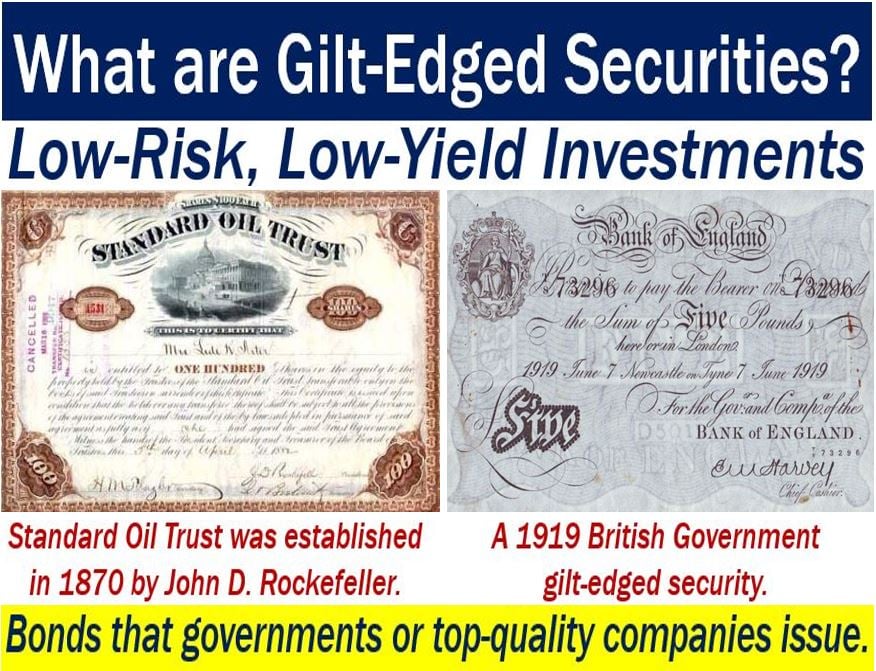Gilt-edged security – definition and meaning
A gilt-edged security is either a bond that a government issues or a bond that a top-quality company issues. The top-quality company has a long record of good earnings. It also has a consistent record of paying its debts and other obligations punctually. Therefore, investors know that the company is a reliable payer of interest and dividends.
Britons commonly use the term when referring to bonds that the government issues through the bank of England. They either use the term ‘gilt-edged security’ or ‘gilt.’ They are the equivalent of American Treasury securities.
Some Commonwealth nations, including India and South Africa, also use the term when talking about government bonds.
Gilt-edged securities originally had gilded edges, hence the name.
People use the term ‘gilt-edged security’ colloquially to denote high-grade bonds. In other words, bonds that carry low yields, versus below investment-grade securities which are relatively riskier.
The Financial Times’ glossary of terms, ft.com/lexicon, says the following regarding gilt-edged securities:
“A term used to describe securities that are virtually risk-less. It has also become the accepted industry name for UK government bonds.”
When investors shift from high-risk investments to gilt-edged securities, we call it a flight to quality. This usually happens when bad news unsettles investors.

Gilt-edged security – history
The first fundraising that historians consider a gilt issue occurred in 1694 in England. King William III needed money to fund the war with France. He raised £1.2 million via the Bank of England, which had just been created.
However, it was not until the late 19th century that people began using the term ‘gilt’ for these kinds of debt securities.
Raising money via gilt-edged security selling became a popular and successful way of raising funds. Especially money that the country required to fund wars.
Later, however, the government sold gilts to fund infrastructure projects when tax revenues were not enough.
Initially, gilt-edged securities were ‘perpetual.’ In other words, they had no specific maturity date.
The government began calling them under various names. It later referred to them as Consols.
Gilt-edged security – maturity
Gilt-edged securities have three definitions regarding their maturity, according to the UK Debt Management Office (DMA):
- Long 15+ years.
- Medium 7-15 years
- Short 0-7 years.
Investors often use the term ‘ultra-short‘ for gilts with a term maturity of under three years. ‘Ultra-long‘ gilts have a term maturity of more than fifty years.

